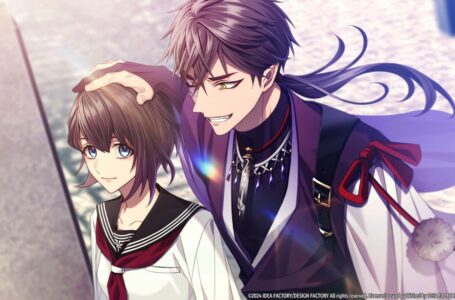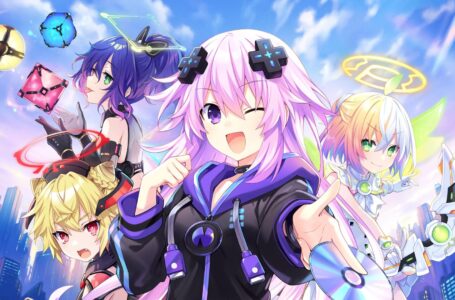The History of Neptunia: Hyperdimension Neptunia Victory
By the time the Neptunia series got to its third installment Hyperdimension Neptunia Victory, even the most ardent naysayers had to acknowledge there was something to this franchise. Selling well enough to justify two sequels was notable enough in its own right, but it was also fair to say that the series as a whole was becoming a genuine cultural phenomenon.
Meme culture embraced Neptune and the girls, and there were rumblings of an anime adaptation ahead. The identities of the various characters in the series were becoming well-established among the community, and with the addition of the CPU Candidate “sister” characters in Hyperdimension Neptunia mk2, there really was a waifu to cover pretty much any taste.
On top of that, the series’ initially tentative exploration of yuri themes proved popular with a much broader audience than the stereotypical heterosexual male otaku crowd that much of the mainstream games media assumed that it was “pandering” (their word, not mine) to.
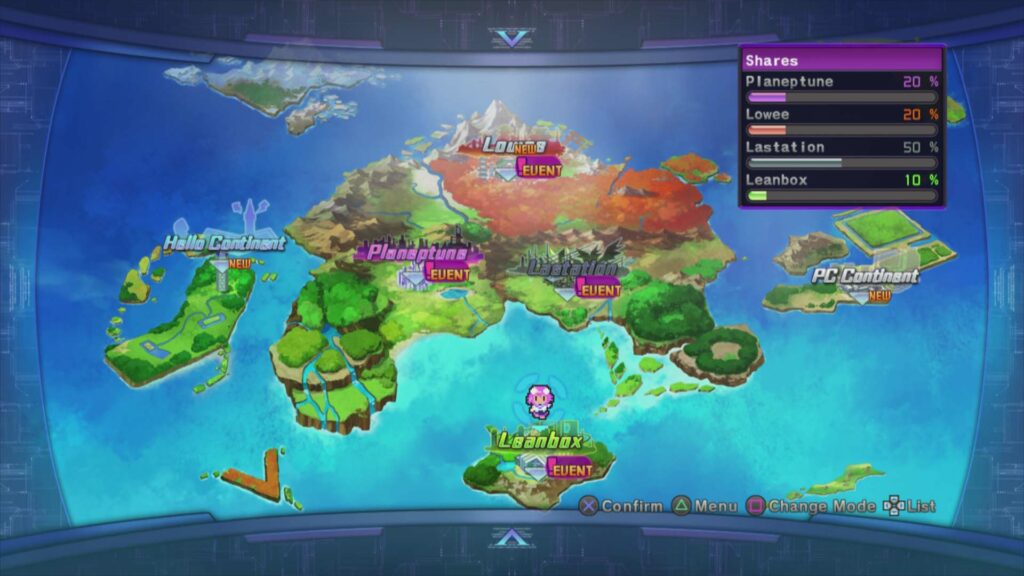
There was still room for improvement, even for those who were fans of the series, however. Hyperdimension Neptunia mk2, although a significant improvement in structure and mechanics over the first Neptunia game, was still full of technical jank and some game systems that could do with a bit of polishing and refining. And there was definitely scope to do more with some of these characters.
Enter Hyperdimension Neptunia Victory which, in a move that became fairly standard for the ongoing series as a whole, shifted its narrative into yet another parallel dimension, allowing for a second quasi-reboot of the series, plus some new costume designs for the established cast. This time around, however, the dimensional shift was explicitly acknowledged rather than simply implied; the game’s introduction shows the Neptune we know and recognise from mk2 being brought from her native Hyper Dimension to the new Ultra Dimension (sometimes referred to as God Dimension, after Hyperdimension Neptunia Victory’s Japanese title), in which time flows differently.
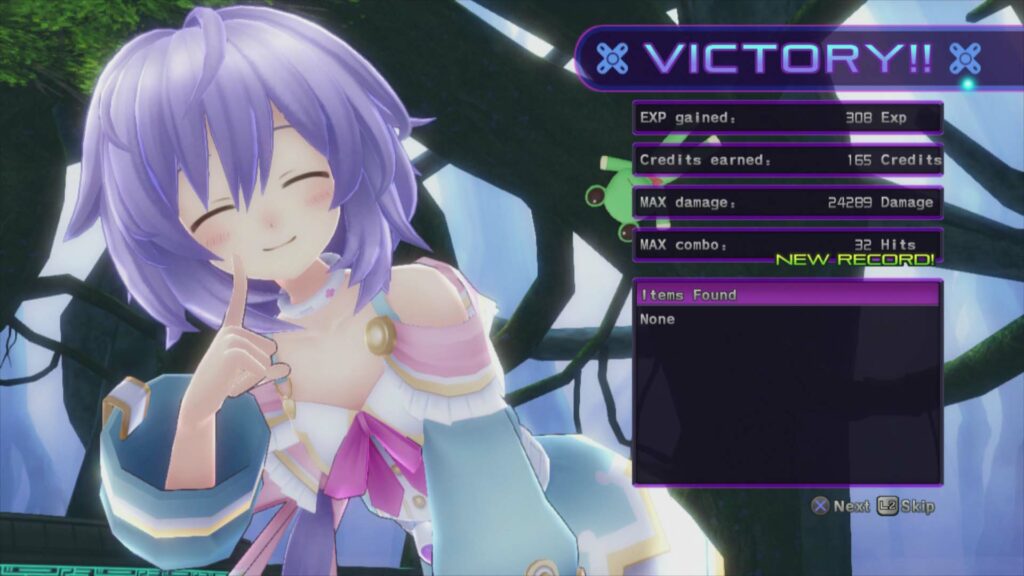
This is primarily an excuse to set Hyperdimension Neptunia Victory in the Neptunia equivalent of the late ’80s/early ’90s, as well as an opportunity to set up some brand new characters. Most notable of these is Plutia, who is Neptune’s replacement as goddess of Planeptune; all of the other goddesses from the Hyper Dimension have direct analogues in the Ultra Dimension.
Plutia is noteworthy for being one of the more morally ambiguous characters in the series. While her human form is endearingly dopey and even more stupid than Neptune is for the most part, her goddess form Iris Heart is a terrifying sadist sporting a Mega Drive-inspired bodysuit and a tendency towards inflicting pain on others. Ultimately, she’s one of the goodies, though, as frightening as her peers might find her at times!
Like Neptune, she’s named after a never-released piece of Sega hardware; in this case, the Sega Pluto, which never got out of the prototype phase, but which appears to have been a variant of the Saturn with an on-board modem and new design.
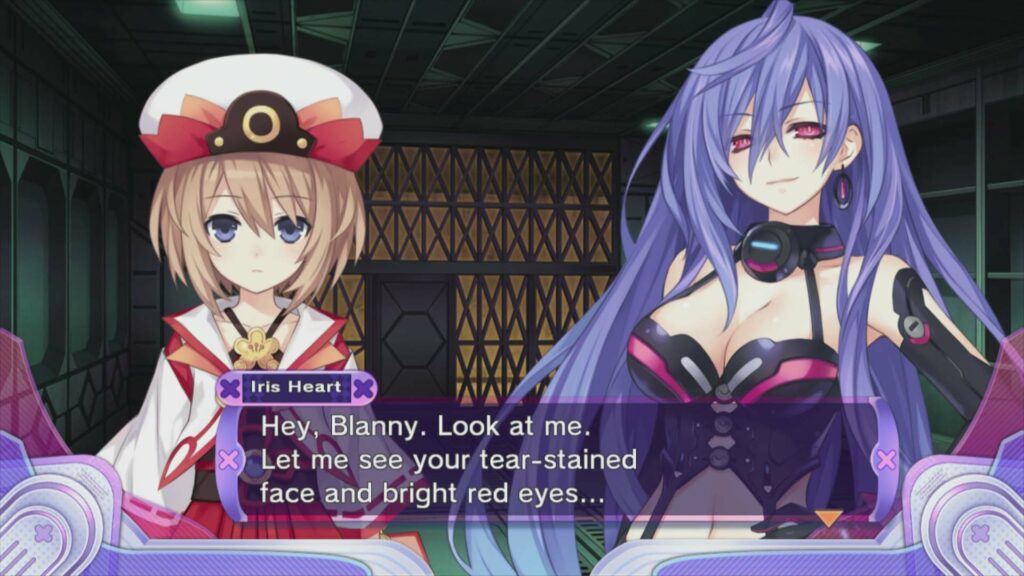
The other major new character who shows up in Hyperdimension Neptunia Victory is Peashy, who becomes the goddess Yellow Heart. While it would be easy to assume that she represents the PC from her name, she’s actually a personification of the PC Engine. There are a number of aspects to her design that make this pretty clear if you know what to look for.
Firstly and most obviously is the fact that her human form is that of a child, and she is dressed like a bee. Her childish form is a reference to how small the original PC Engine console was compared to its peers on the market at the time, and the bee costume is a pretty on-the-nose reference to Hudson Soft, who created the PC Engine in collaboration with NEC.
It doesn’t stop there, though; Peashy’s surprising strength considering her size (and abject stupidity in goddess form) is a reference to how many people over the years have mistaken the PC Engine for a 16-bit console thanks to its excellent performance and technical capabilities. Neptune also refers to Peashy by the nickname P-ko, which is probably the most obscure reference in the game; this refers to the Sega Pico, a device targeted at children between the ages of 2 and 8 who, among other things, like to draw. Peashy fits this target demographic perfectly.
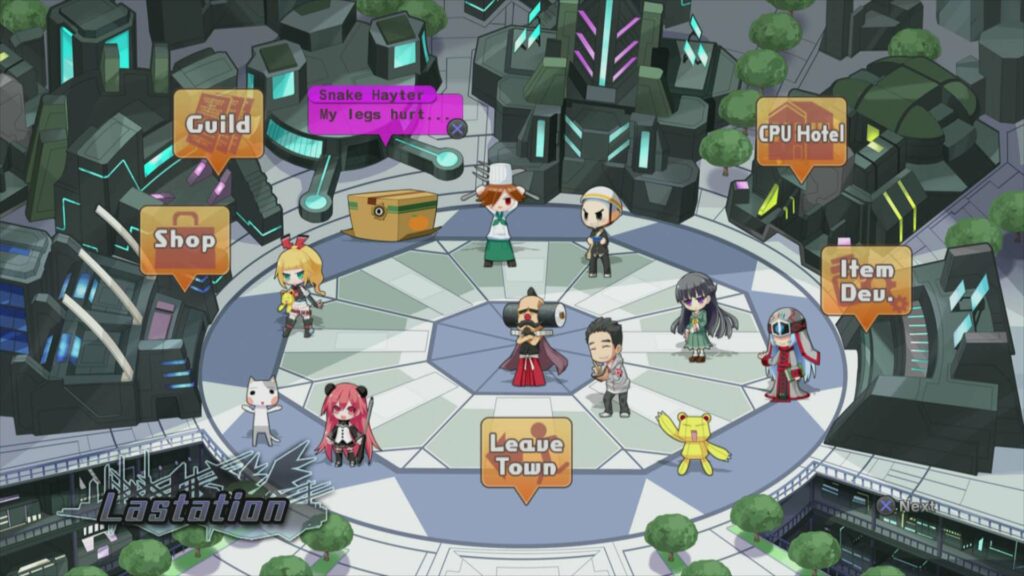
The late ’80s/early ’90s setting isn’t just for show, either; the lore of Hyperdimension Neptunia Victory refers to things such as the great video game crash of 1983 and the way in which Atari were toppled from dominance in the worldwide games industry; indeed, the main antagonist of the game is the embodiment of the Atari 2600, with her immortal nature and ability to breach the fabric of time and space likely being a reference to the enduring popularity of that console even many years after its obsolescence.
While it could have been somewhat tiresome to have the Neptunia series practically reinvent itself again for its second sequel, there’s definitely a strong sense throughout Hyperdimension Neptunia Victory that the franchise has absolutely found its footing. The Ultra Dimension is clearly distinguished from the Hyper Dimension, which has been regarded as the “canonical” dimension since Hyperdimension Neptunia mk2, insofar as anything can really be considered “canonical” in this series, and there are even instances of other characters crossing over from one dimension to another.
Nepgear, for example, manages to cross over in order to help out Neptune, though her anxiety over not being worthy to be the main character in the previous game is well and truly put to the test in Hyperdimension Neptunia Victory, where she is not the protagonist. The poor girl does her best but never quite seems to get the appreciation she deserves, but she’s a welcome presence nonetheless.
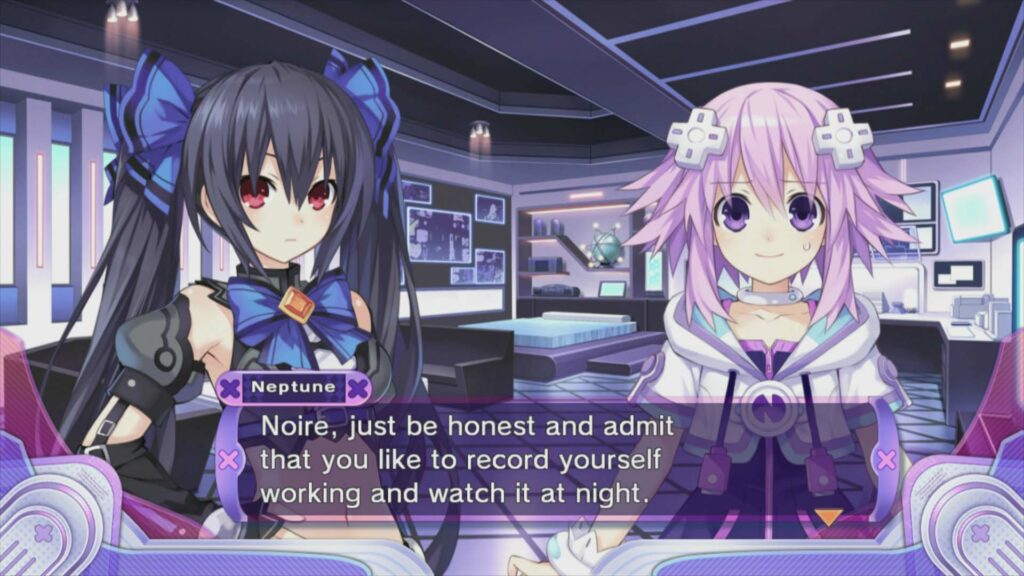
Instead, it feels very much like the Ultra Dimension was created to provide the established characters with an opportunity to do something a little different. This new world is similar to the one we’ve seen before, but not identical; likewise, the characters we meet are recognisable, but not the same — but Neptune herself (and, later, Nepgear) remains a pleasing constant, allowing us to feel a sense of coherence that might otherwise have not been there.
There’s a feeling of mechanical coherence, at least, with Hyperdimension Neptunia Victory’s main game systems being more of an evolution from Hyperdimension Neptunia mk2 rather than a complete reinvention. They work particularly well, though — so much so that Hyperdimension Neptunia Victory’s combat system remained the basis for not only Neptunia battle mechanics for several subsequent games, but also a variety of other Compile Heart titles over the years.
At heart, the way things work is broadly similar to Hyperdimension Neptunia mk2 in that you can move freely around a particular area on the battlefield on your turn, and strike with either a series of combo attacks or special skills. Unlike Hyperdimension Neptunia mk2, though, the combo skills cannot be continually performed until you run out of AP; here, the combos have a hard finish point, and thus it’s a good idea to set them up in such a way that you get maximum efficiency out of them.
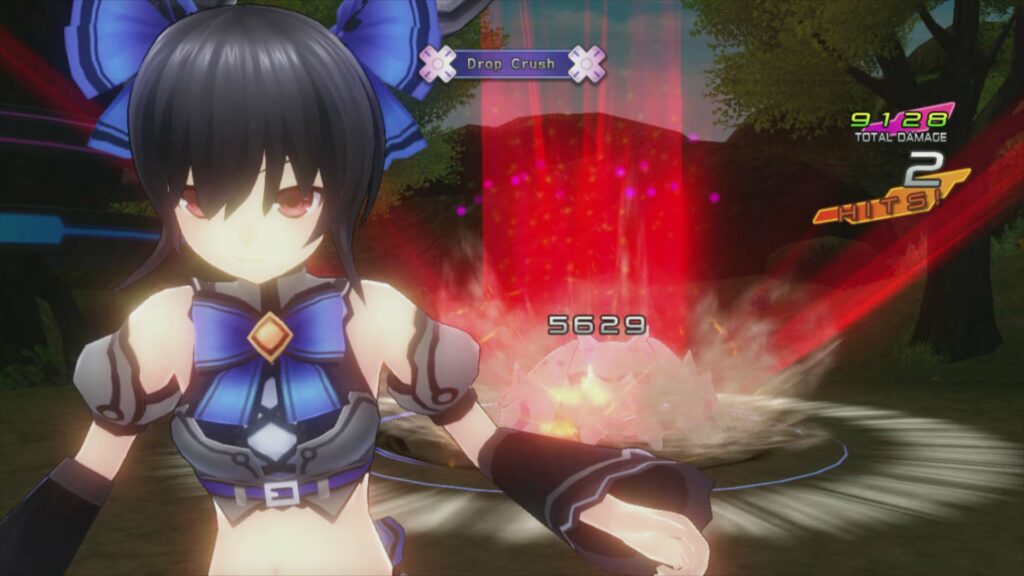
With characters learning a variety of Rush (multi-hit), Power (self-explanatory) and Break (guard-breaking) attacks as they level up, you’ll want to frequently revisit the game’s menus to ensure everyone is fighting as efficiently as they can. Combine this with the variable area of effect of some weapons, and there’s a pleasing amount of variety to the combat as the game progresses — though the swift pace with which things unfold in battle means that the game never gets bogged down with excessive fighting.
Like the previous two games, Hyperdimension Neptunia Victory primarily unfolds in two main components: navigating an overall world map, from which you can trigger the game’s visual novel-style story events or enter dungeons, and the dungeons themselves, which are filled with monsters, treasures and collectible items that can be used for crafting.
A notable addition to Hyperdimension Neptunia Victory is the Scout system, which allows you to send out various characters to explore dungeons independently of your main party and bring back items, credits and new scouts, as well as alter either the collectible items or the monsters present in a dungeon. This latter feature is necessary to acquire certain items, so if you find yourself getting into the crafting side of things, it’s worth keeping good notes of what to find where.
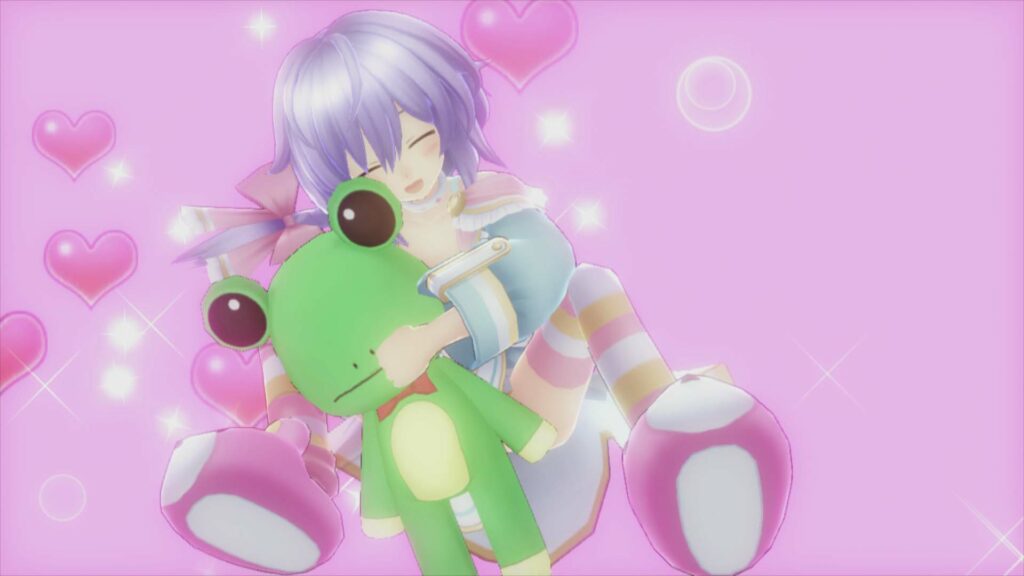
Alongside this, there’s a new “Disc Burning” system, which returns in a few subsequent games. Here, you can use blank discs and “idea chips” in an attempt to develop new games; these, subsequently, can be used as equippable items that provide various special passive abilities. Successful disc burning can sometimes result in a Godly Game, which has particularly strong or additional effects, while Sucky Games have negative traits.
There’s a lot to Hyperdimension Neptunia Victory in total, and as a result the game can most certainly keep you busy for well over a hundred hours or more if you let it. This is a strong contrast to the 20-30 hours or so needed to see everything Hyperdimension Neptunia Victory had to offer, and as a result there are fewer different endings to discover; rather than the variety of “nation-specific” endings of mk2, Hyperdimension Neptunia Victory simply features Normal, Good and True endings that are primarily determined by how thorough you were about locating various key items and seeing specific events.
Of the three original Hyperdimension Neptunia games released on PlayStation 3, Hyperdimension Neptunia Victory is by far the most well-loved, since it successfully refined the good ideas of the first two games into something that just felt like it worked, without any caveats. Consequently, it benefits less from being remade in the Re;Birth series, which we’ll talk about in good time, and still holds up very well in its original incarnation.
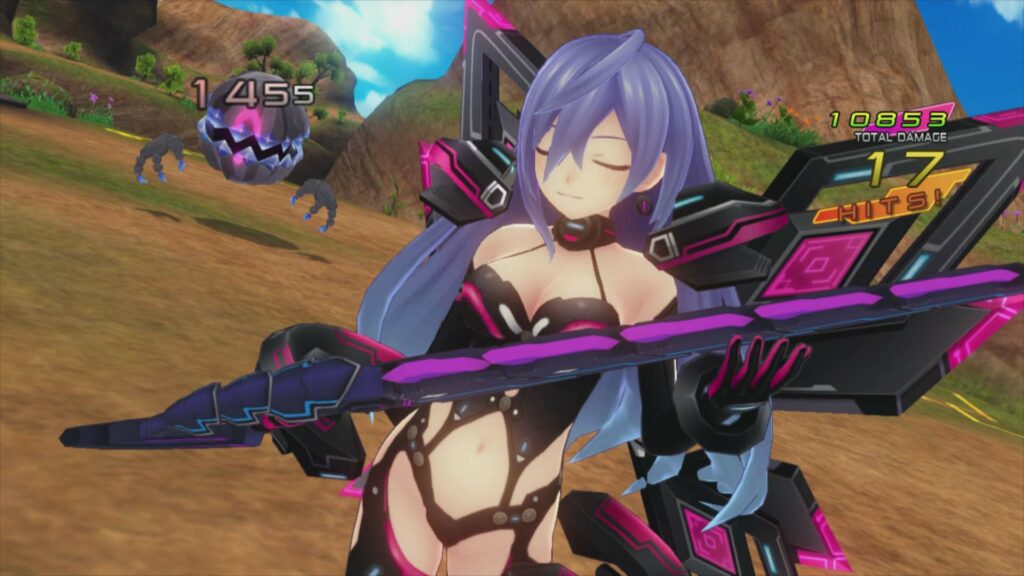
Like most of the other Neptunia games, Hyperdimension Neptunia Victory stands by itself as a self-contained storyline and is as good a place to start with the series as any — though once again, you’ll likely get more enjoyment out of it if you play mk2 or Re;Birth2 at the very least beforehand.
And from hereon is where the series really starts to spread its wings — but that’s a tale for another day!
Hyperdimension Neptunia Victory’s remake Hyperdimension Neptunia Re;Birth 3 can be enjoyed today on Windows PC via Steam.
Join The Discussion
Rice Digital Discord
Rice Digital Twitter
Rice Digital Facebook
Or write us a letter for the Rice Digital Friday Letters Page by clicking here!
Disclosure: Some links in this article may be affiliate links, which means we may earn a small commission if you make a purchase after clicking on them. This is at no additional cost to you and helps support Rice Digital!
- Letter from the Editor: passing the torch - June 30, 2023
- Super Woden GP 2 is looking promising - June 30, 2023
- Inti Creates is making a 32 bit-style Love Live action platformer - June 26, 2023





